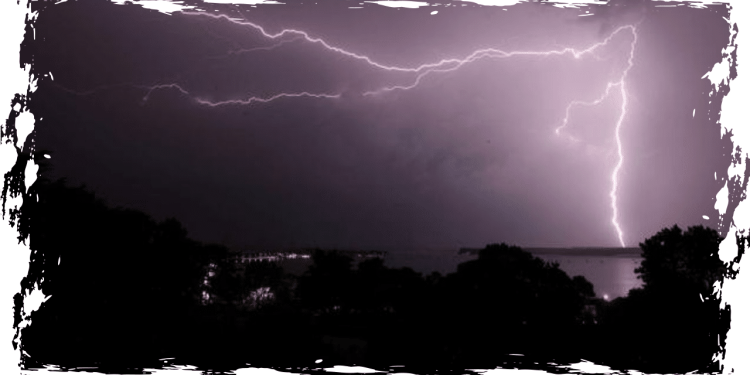On Saturday, a lightning strike in Colorado killed a rancher and 34 of his cows in Jackson County, adding to the death toll from destructive storms that swept across the United States during Memorial Day weekend.
The strike killed 51-year-old Mike Morgan on his property near Rand, some 120 miles northwest of Denver, at the end of “branding day,” when community members often chip in to help brand cattle, according to news agencies. He was feeding livestock hay when the bolt struck him, knocking over 100 cows off their feet. About 2 a.m. MT, he made the initial 911 call.
“The 32 cattle did not get back up,” coroner George Crocket told the Colorado Sun. “From what I can tell, it hit him in the trailer.” It struck all the animals gathered around the trailer.
The National Weather Service had issued a warning that a storm was approaching the Front Range Urban Corridor and advised residents to go indoors if they heard thunder. Morgan’s death follows the deaths of at least 21 others due to storms and tornadoes in the central United States over Memorial Day weekend.
Despite the tragedy, fatal lightning strikes are rare. The National Oceanic and Atmospheric Administration reports that lightning kills approximately 50 people annually, with a one-in-a-million chance of striking someone. Ninety percent of the victims survive.
However, working outside can put you at greater risk. According to data from the US Centers for Disease Control and Prevention, 444 people died as a result of lightning strikes between 2006 and 2021, with deaths occurring most frequently during the summer.
Florida, Texas, Colorado, North Carolina, Alabama, Arizona, Georgia, Missouri, New Jersey, and Pennsylvania have reported the most lightning-related deaths and injuries.
Florida is known as the United States’ “lightning capital,” with over 2,000 lightning-related injuries reported over the last 50 years.
Since 2006, just five states have reported no deaths: Alaska, Delaware, Hawaii, New Hampshire, Washington, and the United States Virgin Islands.










